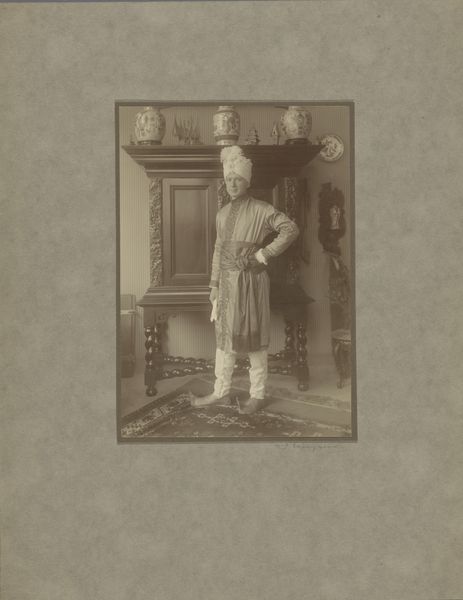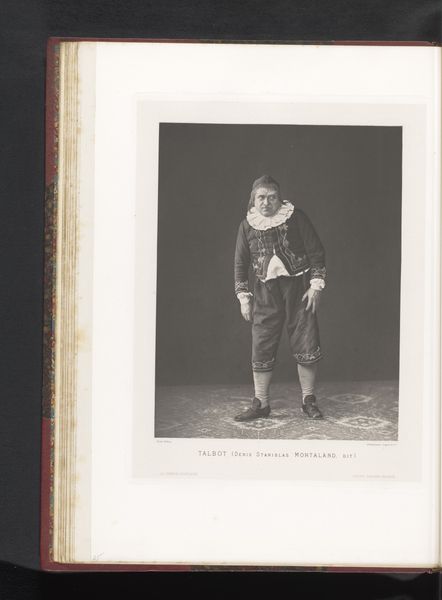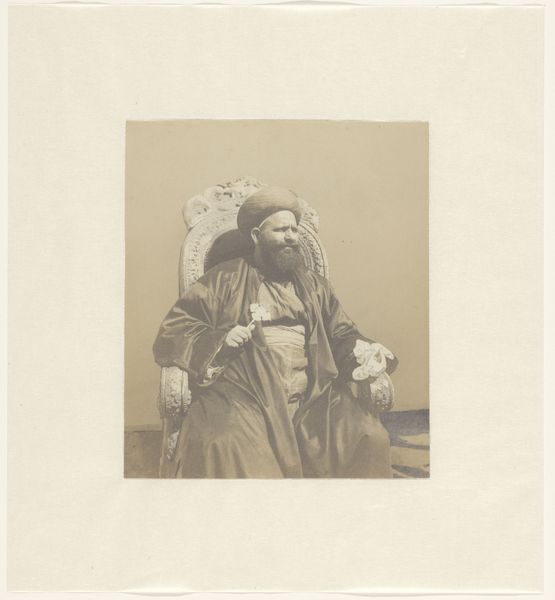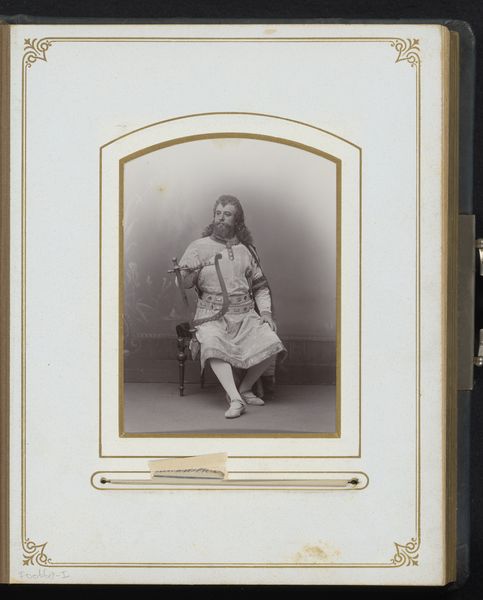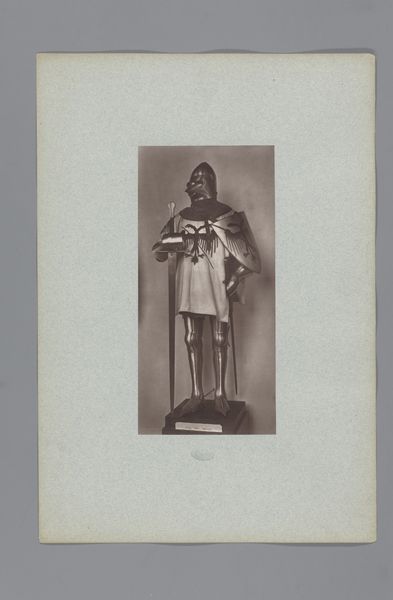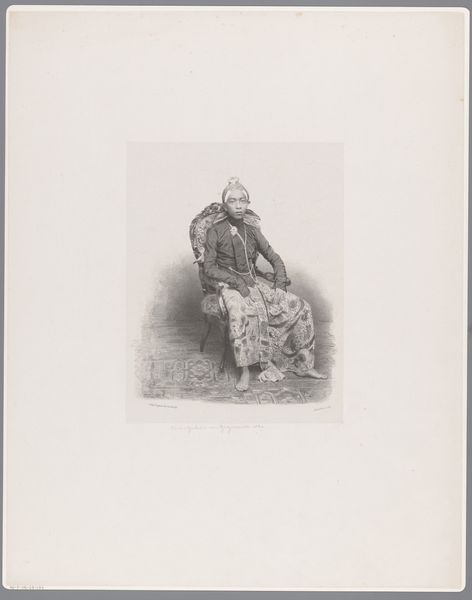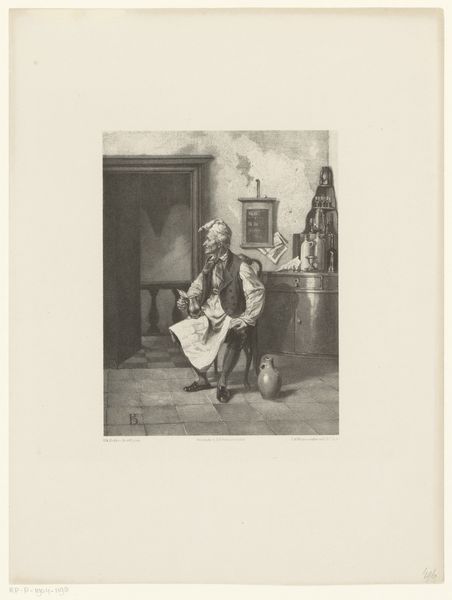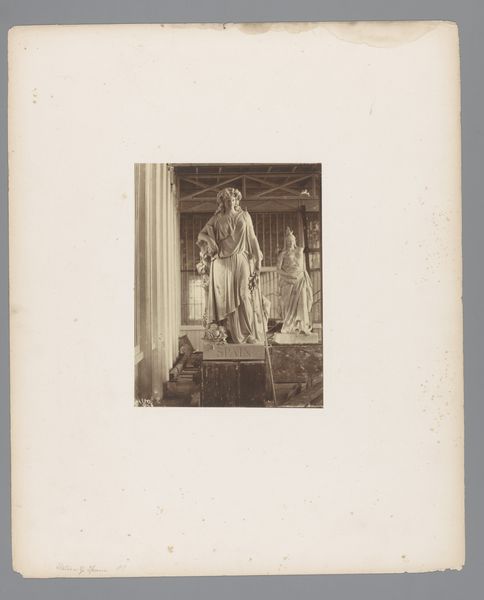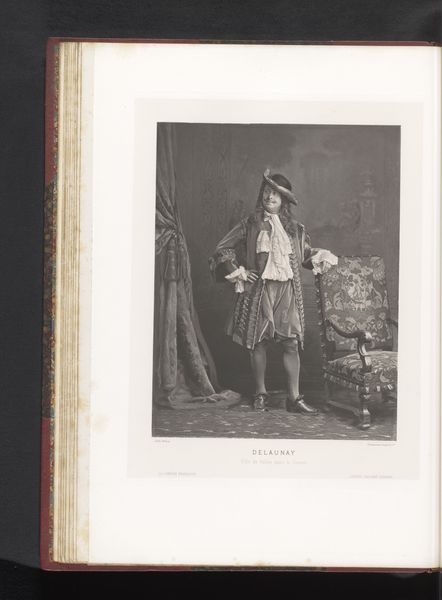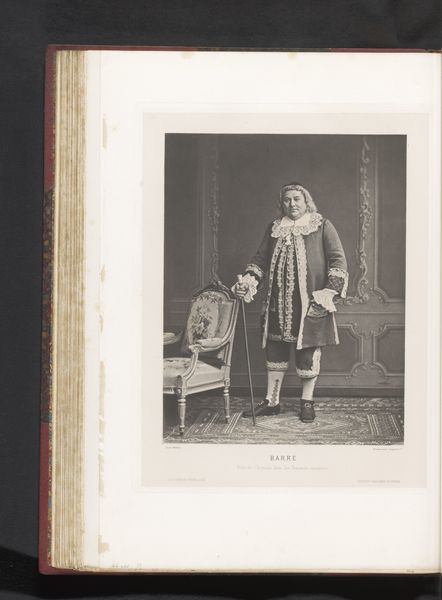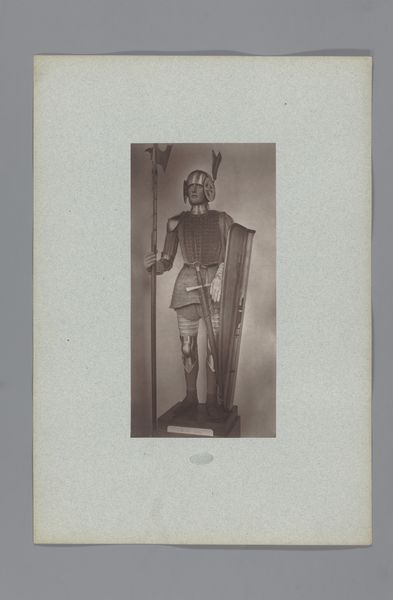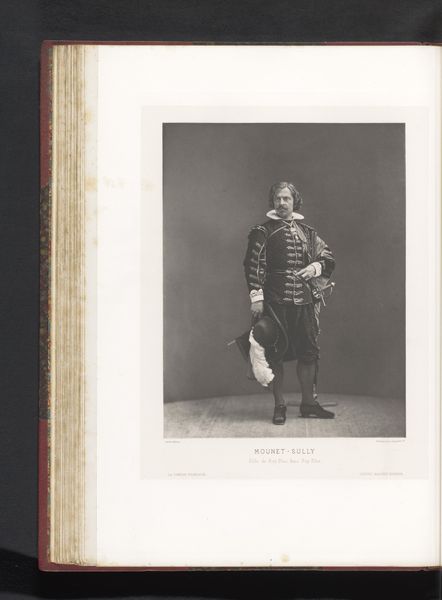
Portret van een onbekende man in indonesische kleding, vermoedelijk gerelateerd aan de familie Marmelstein 1900 - 1940
0:00
0:00
photography
#
portrait
#
still-life-photography
#
archive photography
#
photography
#
historical photography
#
orientalism
#
19th century
Dimensions: height 306 mm, width 241 mm
Copyright: Rijks Museum: Open Domain
Curator: Alright, let's delve deeper into this fascinating photograph, “Portret van een onbekende man in indonesische kleding, vermoedelijk gerelateerd aan de familie Marmelstein,” dated 1900-1940, by J. Kuipers. Editor: This photograph has a staged feel to it, like a tableau vivant. What is your take? Curator: I’m interested in what the material conditions of producing such a portrait tell us. The studio setting, the choice of Indonesian clothing, and the probable connection to the Marmelstein family points towards complex power dynamics during that period. What kind of consumption is on display here? The sitter isn’t *actually* Indonesian, I presume? Editor: Probably not, the photograph suggests some form of Orientalism. Are you focusing on how it presents identity as a commodity? Curator: Precisely! This manufactured image signifies more than a simple portrait. We must look at the photographer's tools, the costuming, and the intent behind it to understand how exoticism becomes a form of consumable identity, a type of display accessible only to certain social strata. Think of the labor involved in sourcing these fabrics and props and the implied narrative they construct. Editor: So, it’s about exposing how the materials and staging highlight an unequal exchange and constructed representation of Indonesian culture? Curator: Exactly. It is easy to dismiss this as just historical photography. But in my view, it encourages critical engagement with the colonial gaze and its enduring impact on the depiction, production, and consumption of identity. The photograph then becomes evidence. Editor: That gives me a lot to consider when looking at this portrait; I initially saw a staged portrait, now I’m more aware of a layered construction of cultural meaning. Curator: Good. Keep asking who benefits from that construction.
Comments
No comments
Be the first to comment and join the conversation on the ultimate creative platform.
